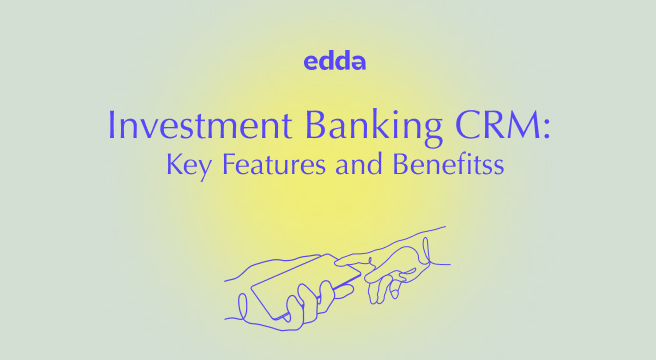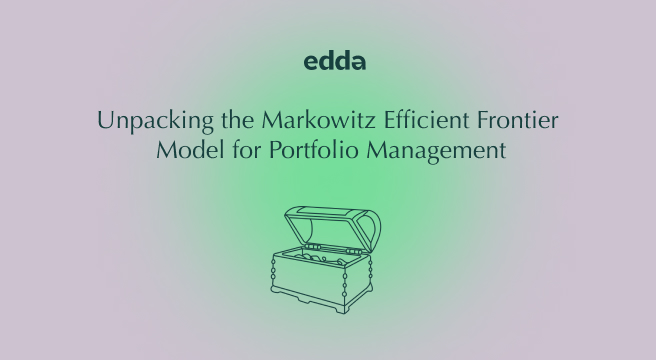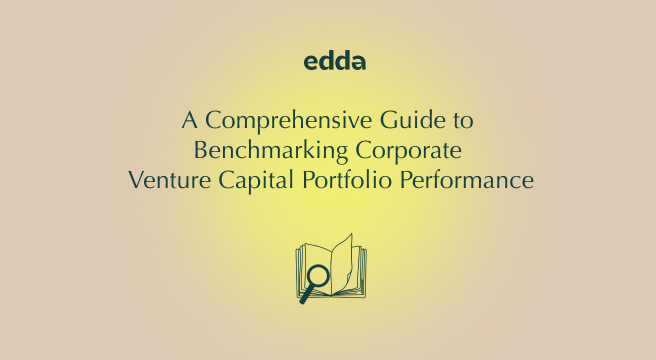Venture capital trends in 2024 are reflecting significant changes in investment strategies and priorities. This article explores these developments, focusing on the increasing preference for follow-on funding and the importance of pro-rata rights in investment decisions.
We examine how venture capitalists are adjusting their approaches in response to a fluctuating economic environment, opting for a more cautious investment style while still aiming for sustainable growth.
These trends highlight a balanced approach to investment, where risk management and the growth potential of existing portfolio companies are given precedence. The expanded role of venture capitalists in operational and strategic guidance is also a key aspect of this evolving sector.
Additionally, the use of advanced tools like Edda’s CRM VC and venture capital portfolio management softwaree is becoming crucial for managing these complex investment strategies effectively.
The Pivot to Follow-On Funding
One of the most notable trends in 2024 is the strategic shift towards follow-on funding. Accounting for a remarkable portion of venture capital, this trend underscores a more cautious investment approach.
Venture capitalists are increasingly channeling funds into their existing portfolio companies, rather than taking risks on new ventures. This pivot is likely influenced by economic uncertainties and a keen focus on the long-term growth and sustainability of ventures. The approach represents a balancing act between nurturing current investments and mitigating risks in a volatile market.
This approach has several key aspects:
Risk Management: By focusing on follow-on investments, venture capitalists are adopting a risk-averse strategy. This shift is likely due to economic uncertainties, where investing additional capital in proven, existing ventures is seen as safer compared to the unknowns of new startups. This cautious approach helps mitigate risks in a volatile market environment.
Sustained Support for Existing Investments: Follow-on funding is not just about risk mitigation; it’s also about nurturing and supporting the growth of existing portfolio companies. By reinvesting, venture capitalists can ensure the sustained development and scaling of these companies, which is vital for their long-term success.
Balanced Investment Approach: This trend indicates a balanced investment approach, where venture capitalists are weighing the potential benefits of new investments against the stability and growth prospects of their current portfolio. It’s a strategic decision to allocate resources where they can potentially yield the highest returns.
Alignment with Broader Market Shifts: The dominance of follow-on funding aligns with a broader shift in the venture capital landscape, reflective of a more mature, strategic, and focused investment methodology. It suggests a move towards consolidating gains in existing ventures rather than dispersing funds across numerous new opportunities.
The Importance of Pro-Rata Rights
Pro-rata rights have emerged as a non-negotiable element in venture capital agreements in 2024. These rights allow investors to maintain their percentage ownership in companies by participating in future funding rounds.
Such an emphasis on pro-rata rights indicates an inclination to protect investments and leverage successful ventures over time. It’s a strategic move to ensure that investors don’t get diluted and can continue to reap the benefits of their successful picks, reflecting a more defensive stance in investment strategies.
Pro-rata rights have gained significant importance due to several critical factors:
Ownership Maintenance: Pro-rata rights are pivotal in allowing investors to maintain their ownership stake in a company. These rights enable them to invest additional capital in future funding rounds, proportional to their existing stake, preventing dilution of their equity percentage. This aspect is crucial for investors who wish to preserve their influence and return on investment as the company grows.
Defensive Investment Strategy: Emphasizing pro-rata rights reflects a defensive investment strategy. In a market where uncertainties prevail, investors use these rights as a safeguard to ensure that they can continue to benefit from the growth of their successful investments, without being edged out by new investors.
Strategic Leverage in Successful Ventures: Pro-rata rights are not just defensive tools; they also provide strategic leverage. Investors can double down on their successful bets by reinvesting in subsequent rounds, ensuring that they remain key stakeholders in high-performing companies.
Attractiveness to Early Investors: For early-stage investors, pro-rata rights are particularly attractive. They assure these early backers that their initial risks are acknowledged and protected, encouraging them to invest in early stages of a company’s development.
Venture Capitalists: Beyond the Role of Financiers
Another key development in 2024 is the expanded role of venture capitalists, transcending the traditional boundaries of mere financial support. Today’s VCs are deeply involved in the strategic direction, operational management, and network expansion of their portfolio companies.
This hands-on approach signifies a shift towards adding value in various dimensions, not just through capital injection. By actively guiding the companies they invest in, venture capitalists are playing a pivotal role in shaping the future of these enterprises, demonstrating a commitment to not just fund but foster growth and innovation.
Key aspects of this evolution include:
Strategic Guidance: VCs are now integral in shaping the strategic direction of their portfolio companies. This involves not only offering capital but also providing insights and advice on market trends, business models, and growth strategies. This active involvement ensures that startups are well-positioned to capitalize on market opportunities and navigate challenges effectively.
Operational Management Support: Beyond strategy, VCs are increasingly involved in the operational aspects of their investments. They offer expertise in areas like financial management, human resources, and technology integration, helping companies optimize their operations for efficiency and scalability.
Networking and Connections: VCs facilitate vital connections for their portfolio companies, linking them with potential customers, partners, and even additional investors. This network expansion is crucial for startups seeking to establish themselves in competitive markets.
Mentorship and Skill Development: Many VCs provide mentorship and skill development opportunities to the leadership teams of their portfolio companies. This can involve anything from leadership training to technical skill enhancement, fostering a more robust and capable management team.
Innovation and Growth Facilitation: By being actively involved, VCs play a significant role in fostering innovation and growth within their portfolio companies. Their insights and support can help startups to innovate more effectively and scale their operations, driving forward industry advancements.
Maximize Investment Strategy with Edda’s VC Portfolio Management Software
Edda, one of the best portfolio management tools for centralizing the entire investment process, offers a suite of tools designed to enhance deal management, relationships, and collaboration for venture capital firms.
Founded on the principle that visibility throughout the investment process fosters stronger relationships and superior outcomes, Edda aims to be the sole software solution needed for managing a firm.
Facilitating deal origination, pipeline management, due diligence, portfolio management, and investor CRM, Edda is currently instrumental in managing over $30 billion for private equity and VC firms in more than 90 countries.
Comprehensive Dealflow Management: Edda provides a centralized system for managing the investment pipeline, crucial for VCs focusing on a balanced investment approach and efficient dealflow management.
Advanced CRM Platform: Integrating relationship data, dealflow, and portfolio information, Edda’s deal flow CRM is key for VCs looking to extend their role beyond funding and effectively nurture existing investments.
Robust Portfolio Management: With tools for tracking and analyzing portfolio performance, Edda supports VCs in strategies centered on follow-on funding and ongoing support for existing investments.
Accelerated Due Diligence: Edda’s capabilities for speeding up due diligence enable VCs to quickly evaluate investment opportunities, vital in a rapidly changing market.
Effective LP Portal: Edda’s LP tools facilitate external deal flow management and transparent communication, important for managing pro-rata rights and investor relations.
Edda’s venture capital management software equips venture capitalists with tools to adapt their strategies effectively to the evolving trends of 2024, enhancing investment approach, operational efficiency, and strategic decision-making.









